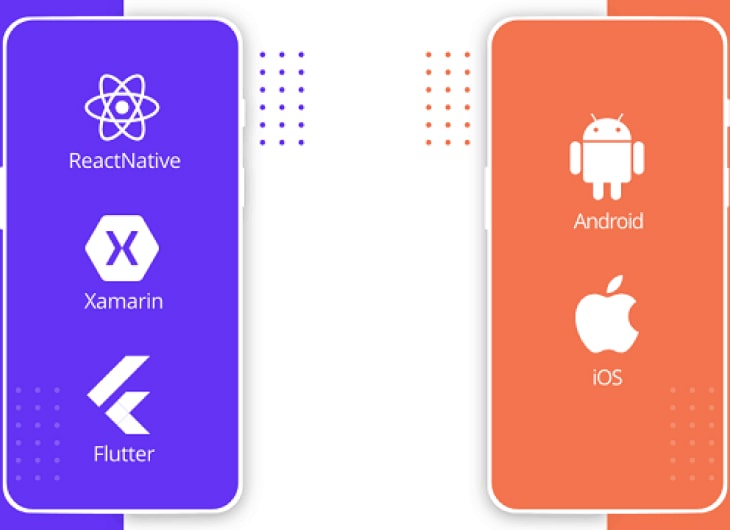Contact Info

Mobile applications have become an integral part of our daily lives, and with the ever-growing demand for diverse applications, cross-platform mobile app development has gained prominence. Cross-platform development allows developers to create apps that can run on multiple operating systems using a single codebase. The future of cross-platform mobile app development looks promising, with several trends shaping the landscape.
1. Advancements in Frameworks and Libraries
The continuous advancement of frameworks and libraries, such as React Native, Flutter, Xamarin, and Ionic, is a significant trend in cross-platform mobile app development. These frameworks offer improved performance, native-like user experiences, and reduced development time, making them more attractive to developers.
2. Integration of AI and Machine Learning
Integrating AI and machine learning capabilities into cross-platform apps will be a game-changer. Developers will leverage AI for features like personalization, recommendation systems, and predictive analysis. The ability to integrate AI across multiple platforms seamlessly will enhance user engagement and provide a competitive edge.
3. Enhanced Security Measures
As mobile applications handle sensitive data, ensuring robust security is vital. Future cross-platform app development will focus on integrating advanced security measures to protect user data and privacy. This includes encryption, biometric authentication, secure data storage, and compliance with stringent data protection regulations.
4. Internet of Things (IoT) Integration
The integration of IoT with cross-platform mobile apps will be a significant trend. Developers will create applications that can interact with IoT devices, providing users with a seamless and interconnected experience. IoT integration will span various domains, including healthcare, smart homes, automotive, and more.
5. Progressive Web Apps (PWAs)
The rise of Progressive Web Apps is another notable trend. PWAs offer a web-based app experience with the capabilities of native apps. They are fast, reliable, and easily accessible, even with a weak internet connection. The ability to work across platforms makes PWAs an attractive choice for cross-platform development.
6. 5G Technology Integration
The widespread adoption of 5G technology will significantly impact cross-platform app development. With faster and more reliable internet speeds, developers can create feature-rich applications that leverage real-time data processing, augmented reality (AR), virtual reality (VR), and high-definition video streaming.
7. Focus on Accessibility and Inclusivity
Developers will increasingly prioritize creating applications that are accessible to all users, including those with disabilities. Compliance with accessibility standards and guidelines will be a fundamental aspect of cross-platform app development to ensure inclusivity and reach a broader user base.
8. Low-code/No-code Development Platforms
The emergence of low-code and no-code development platforms will democratize app development. These platforms enable individuals with minimal coding skills to create functional apps, accelerating the app development process and reducing the barrier to entry for aspiring developers.
In conclusion, the future of cross-platform mobile app development is poised for exciting advancements, driven by evolving technologies and the growing demand for efficient, scalable, and feature-rich applications. Developers and businesses need to stay updated with these trends to harness the full potential of cross-platform app development.